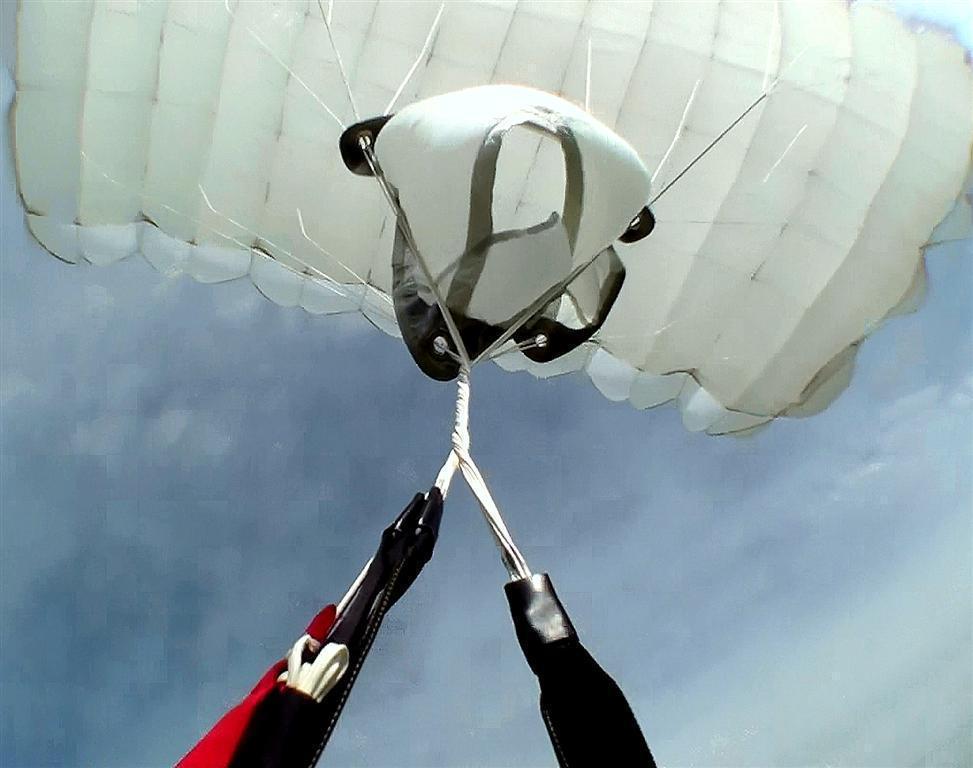Leaderboard
-
in all areas
- All areas
- Adverts
- Advert Questions
- Advert Reviews
- Videos
- Video Comments
- Blog Entries
- Blog Comments
- Images
- Image Comments
- Image Reviews
- Albums
- Album Comments
- Album Reviews
- Files
- File Comments
- File Reviews
- Dropzones
- Dropzone Comments
- Dropzone Reviews
- Gear
- Gear Comments
- Gear Reviews
- Articles
- Article Comments
- Article Reviews
- Fatalities
- Fatality Comments
- Fatality Reviews
- Stolen items
- Stolen item Comments
- Stolen item Reviews
- Records
- Record Comments
- Record Reviews
- Help Files
- Help File Comments
- Help File Reviews
- Events
- Event Comments
- Event Reviews
- Posts
- Status Updates
- Status Replies
-
Custom Date
-
All time
January 20 2016 - August 9 2025
-
Year
August 9 2024 - August 9 2025
-
Month
July 9 2025 - August 9 2025
-
Week
August 2 2025 - August 9 2025
-
Today
August 9 2025
-
Custom Date
05/08/2019 - 05/08/2019
-
All time
Popular Content
Showing content with the highest reputation on 05/08/2019 in all areas
-
3 pointsSee, here's the thing: I get taxed a lot. I'm solid upper-middle class with just my own income already, and then my wife makes a bit more than I do, so we pay. A lot. When I say a lot, I mean that in real numbers, not in percentage alone. 10% tax to someone who only has $100 is a lot for that person. That $10 has more significance for someone who is poor. the same 10% tax to someone who has 1,000,000 is A LOT MORE, right? Except that when it comes to meeting basic needs, the 100,000 is less significant to the person who has 1,000,000. It won't prevent him or her from meeting their basic needs. I use that only for a base example to prove my point: If I had to pay another 3% of my income toward federal taxes, and as a result of that, it would provide tuition-free college education, it wouldn't bother me in the least. The extra money that I'd be paying in taxes wouldn't harm my ability to provide for the basic needs of myself, my wife, or my children. Hell, we'd still be doing really well. And that kind of investment in our own country is sorely needed. The ripples from investing in the grass roots of the country rather than letting it trickle down causes the standard of living to go up for ALL Americans; not just the 1%. I'm really good with that. I love my country. All of it. Not just the wealthy people.
-
2 points
-
2 pointsNo kidding. If you 'hover' over his avatar pic, a box with some user info will pop up. At the bottom of that is a couple 'buttons'. One is "Ignore User." Probably the biggest improvement of the upgrade.
-
1 pointRosie Manning Breaks Down Accessibility Barriers in the Tunnel Raise your hand if someone you know has been seriously injured on a skydive. Everybody? Right. Now -- keep your hand raised if that inspired you to invent a whole new apparatus to get your friend back into flight mode. I’m willing to bet that very, very few hands have stayed raised. One of them is Rosie Manning’s. The first thing you should know about Rosie Manning is that her lissome form and noon-in-July demeanor might easily fool you. She’s sweet almost to a fault -- but then you start to realize that she has you direly outgunned in the brains department. This mechanical engineer can think in circles around most folks (and then take you to the tunnel and fly in circles around them -- but more on that later). If you ask her, she delicately shrugs it off as a survival instinct. “When you study engineering as a girl,” she notes, “You’re already in an uphill battle. There were 200 guys and 9 girls in my degree. From day one, I was going against the wind.” As it turns out, Rosie thrives against the wind. She and one of the other nine girls in the program (Emily Whatton, a dynamo in her own right) joined the university’s skydiving club. At first, it was a lark, but by year two, both girls were hooked. Time flew. For the fourth and final year, the program participants were tasked with an individual project which made up the bulk of the students’ final grade -- and Rosie knew exactly what hers was going to be. It was that year -- 2016 -- that UK skydiver Ben White injured himself during a swoop. He came out of it alive, but paraplegic. Rosie figured she could use her project to help. “I was heavily addicted to skydiving at this point,” Rosie remembers, “and I really wanted to do a project that was skydiving-related. I had an idea.” Rosie sent Ben a message: How interested would you be in letting me design something for you to help you fly in the wind tunnel again? Unsurprisingly, he was entirely up for it. Bonus: Ben himself had studied robotics at university, so the process was uniquely collaborative. So far, so good: But there was still a baffled academia who had to buy in. “The first time I pitched the idea of the project to my tutor,” Rosie laughs, “He said, ‘Okay, so you’re telling me you want to throw a paraplegic person out of an airplane?’ Um...no. Then I spoke to quite a few of my other teachers about it to get some advice. They all told me it wouldn’t be possible.” “I just didn’t listen,” she grins. “I went and did it anyway.” Rosie, with Ben’s collaboration, set about designing a brace that would support Ben’s lower body for the purpose of tunnel flying. First problem: the university only allowed for a total project budget of 100 pounds. To solve her problem, she asked for help. Rosie went to a long list of orthopedic and prosthetic companies. Finally, she had a lucky break: she got an email back from a company in the UK called TruLife, whose Head of R&D, Shane Nickson, was a keen skydiver. He offered funding and help with manufacturing. TruLife ended up custom molding the carbon-fiber-and-titanium brace to Rosie’s design. The second challenge: tunnel time. This wasn’t too tough, luckily, as the owner-at-the-time of the UK’s Bodyflight Bedford was a super-cool guy who was happy to donate tunnel time to the project. Score. The third big roadblock was, again, academia. And it was a whopper. “We struggled making the project fit the specifications the university wanted,” she explains, “because the university wants you to show your preparation; the calculations; the justifications for all the choices.” In order to meet the requirements, the team had to build an external sensor system that would measure the angle of the wearer’s legs in different orientations: belly flying; back flying; free flying. From that data, they worked out the forces that would act on the wearer’s legs in each position to determine the required strength of the brace. “That actually took up a lot of the project,” Rosie notes. “And Ben was a huge help with that because he was a robotics guy, so he knew loads about the programming that was required.” After they finished the project -- after Rosie had left university -- she, Ben and two other friends entered the World Challenge in the rookie category. “There were only four teams in the category,” she remembers, “but it ended up being this huge battle with another team for third place. We just beat them, and I think the fact that our team beat another team that was completely able-bodied was probably the best day of this whole thing. We went up to collect our medals -- Ben, in his chair -- and we got the biggest cheer.” Such a triumphant, happy moment, no? But it came at such a confusing time. “To be honest, when I finished my degree, I honestly had no idea what I wanted to do,” Rosie remembers. “I knew that I pretty much hated the first three years of my degree but absolutely loved the final year. If knew that, if I was going to do engineering, it needed to be something I wanted to do -- something sport related -- because that’s what I love doing.” “I knew that going into a scheme with a huge company wasn’t for me,” she continues. “It would have been a super easy thing to do. Pretty much everyone in my degree went and did that because it’s the next step in the system they’ve set up for you. I didn’t know what I wanted to do, exactly, but I know I don’t want to do that.” So: Rosie and her friend Emily Whatton took off. The pair went traveling for a year with their partners -- also skydivers -- and the tiny amount of money the foursome had managed to save up. While on the road, Emily and her partner were offered jobs as tunnel instructors at Sirius Sport Resort in Finland. Six months later, Rosie got the call and joined them. While there, Sirius backrolled Rosie’s build of another tunnel mobility brace and started welcoming even more adaptive athletes into the bodyflight community, a fact of which Rosie is understandably proud. “Currently, there are two separate frames --” she explains, “a smaller one and a larger one, with different-sized straps that can be fitted with either one. If you have someone tall and skinny, you can use the longer frame with the shorter straps, and vice versa. For kids, we use the small frame and the smaller straps.” “It was quite hard to build it without really knowing what sizes of people we were going to get,” she adds, “but I was pretty pleased because the system can accommodate anyone from a tiny 8-year-old up to a fairly massive guy.” Users report that the biggest challenge for the adaptive flyer is fitting the brace to the body, because it has to go underneath their legs while the flier is seated in their wheelchair. Once they’re assisted from the chair into the airflow, it’s pretty much a snap. “[The brace] is at a set angle,” Rosie says, “so fliers with shorter legs have more forward drive and fliers with longer legs have more backward drive for him. That’s easy to manage; we just make sure that, when we brief them, we emphasize that they need to be really relaxed in the arms because we’re going to need to adjust the arm and hand position to counteract any drive that produces. Every [adaptive athlete] we’ve flown with so far seems to take that on board really well, and they fly beautifully.” The photos of Rosie’s adaptive athletes really speak for themselves. “I mean, it is fantastic,” Rosie enthuses. “I think that flying and skydiving is the greatest sense of freedom you can experience in this life. For an adaptive athlete -- someone that, maybe for their whole life, has been confined to a wheelchair -- it is a feeling that is like no other. Sharing that is super rewarding. I want to do a lot more of it.” Rosie recently relocated to work at a wind tunnel in Canada, but she certainly hasn’t abandoned that dream. Currently, she plans on taking her design in two different directions: continual development on the first-timer model, as well as a model designed for the specific needs of adaptive sport flying. “We got [Ben White] belly flying and back flying in the current design,” she explains, “but I want it to be able to do more. Ultimately, we want a design that makes freeflying possible. I’m thinking in baby steps -- take it to some low-speed back carving and belly carving; work up from there. I want to give anyone who wants to get involved in this sport the opportunity to progress in it as well.”
-
1 point
-
1 point
-
1 pointUpdate - now over 800 former federal prosecutors have signed the letter making it clear that Trump obstructed justice to try to hide his misdeeds.
-
1 point
-
1 pointAnd that is why they all pay to come to the US for higher education
-
1 pointHey Turtle, remember waybackwhen when you made an assertion about someone else's beliefs? I 'member...
-
1 pointI have no doubt that is true, and I would support such a move. However, given that you just claimed that you "despise others telling me to what and how they are going to spend my money" I find your vehemence amusing. Apparently you only despise others telling you what and how to spend your money when it's spent on something that does not support your agenda; when it is something that does support your agenda you are fine with it. Welcome to the attitude of . . . . pretty much everyone in the US, including all those liberals you are always attacking.
-
1 pointWhat hypocrisy? He said he's happy to pay more than people who make less than him. He said he's happy to pay a greater percentage than people who make less than him. He said he's happy to pay more than he pays now. Sounds pretty damn consistent to me.
-
1 pointNone of what you said in the last two posts logically follows from Yobnoc's position. You're arguing against a strawman, and doing it in a dickish way. One can only conclude that the things he is saying make you too uncomfortable to honestly assess your own views on the topic.
-
1 pointNow you're just talking bullshit. The man clearly indicated a willingness to pay a share. We all pay a share, the theory is that we pay some share partly according to our ability to pay. It will always be a never ending battle how much that will be. The bottom line is that no one gets rich without a society based on rules. The fairer the rules are the more wealth will be generated. Less corruption equals more wealth overall.
-
1 pointThey preyed upon people that wanted to, and could make a quick buck. They skirted the rules a bit - found a back door into an industry that they could exploit. The only way this works for them is if it's supplemental income to someone, not a full time profession. No sympathy for the companies. Some - but not much sympathy for those that wanted to find a back door and are now complaining. I despise the "You Owe Me" society that we live in now.
-
1 pointI don't have a bit of sympathy for anyone involved in Lyft or Uber. The gig economy put the taxi business entirely out on the street and now they're griping because they don't get paid enough for it to be a real income.
-
1 pointI haven't been posting here long, but from what I can tell, you sidestep and dance around every attempt to get you to clarify your position. That's called trolling. You come in, stir the pot, and never provide any specific answers to probing questions on your positions. I think I'm going to join the growing group of people who put you on "ignore," as soon as I figure out how to do so.
-
1 pointYea, we have a basic 48v club car at the DZ. It needed batteries. We looked at the price and bought a used Ford Winstar van instead.
-
1 pointI've been doing 450's for a long time now. Last year, I wanted to try out only harness to explore the difference. I think I ended up doing 200 jumps with harness only. I'm jumping a HK-75(WL 2.6) and a HKT-69 (WL 2.9). Front riser turns: Gave me a much faster dive. Sometimes at Pink Open, it can get turbolent. And sometimes so much, that I couldn't hold my front risers down thoughout the dive, ruining the dive. Harness only: A much flatter a searching dive. I was doing the turn too slow though. And when I was speeding up the turn in general, I found it hard to get enough speed for the rollout-power to be efficient. It's quite comfortable though. You just chill and turn, giving your brain peace for concentration(no mucles needed, pretty much). At the moment, I wanna go back to 450 with fronts, or go to 630 only harness. At times, I would get the SAME horizontal speed on the 75(WL 2.6) with fronts, compared to the 69(WL 2.9) with harness only. As far as Setup: Fronts: Easy. You don't travel as much in the dive. You don't have to account for drift in the turn as much. Harness: Semi-Hard. You have to start the turn further out, and you travel a bit more forcing you to really read the winds and try to calculate the drift in the turn. So my conclussion was: Harness only = less speed and power through the gates. Hard setup. Easy to turn. Needs a bigger turn, or I simply need more training to adjust(faster turn). Fronts = More speed and power through the gates. Easy setup. Hard in turbolence.
-
1 pointThat is actually good news, we don’t want the economy to overheat. Moderate growth, full employment, real wage growth and low inflation, it doesn’t get any better than that.
-
1 point
-
Newsletter


.thumb.jpg.4bb795e2eaf21b8b300039a5e1ec7f92.jpg)








.thumb.jpg.ca9472a231c7ea53cc46c1298fd19545.jpg)